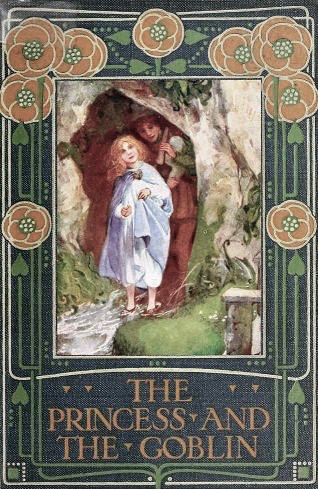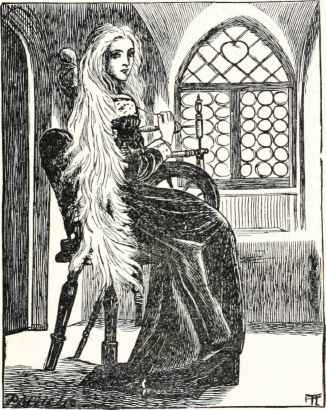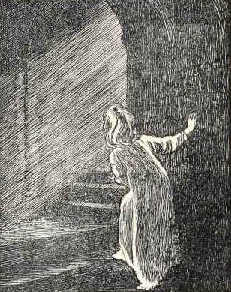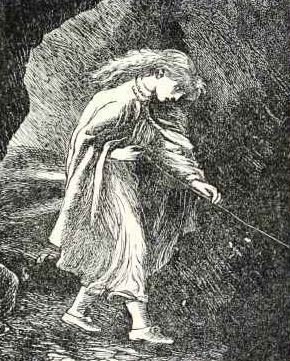
LIFE AS MYTH
![]()
JOURNAL
![]()
JOURNAL 2007
![]()
Following a white hart
Exploring myth & meaning
![]()
WINTER 2007
Open to my own humanity
The metaphorical rim of the glass
![]()
LIFEWORKS
![]()
ATLAS
![]()

WINTER 2007
THE PRINCESS AND THE GOBLIN
Like the religious and cosmic myths that humankind has created across the ages, a personal myth can carry forward something about humankind that is worth preserving and improving. The stories we create can influence the stories of other people, those stories give rise to still others, and soon we find meaning and connection within a web of story making and story living. Through our personal myths, we help to create the world we live in, at the same time that it is creating us.
Dan McAdams, The Stories We Live By: personal myths and the making of the self (1993)
CIRCA 1930'S
My mother grew up in Augusta, Georgia and in 1939, when she was six, there was a polio epidemic. The school board closed down all the schools as a precaution but she caught it anyway. A neighborhood friend also contracted it at the same time. My grandmother blamed the whole business on a glass of lemonade. It seems both girls had purchased nickel glasses at a neighborhood stand ten days earlier and my grandmother decided that the lemonade was the link between the children and their two cases of the polio.
Cover of the edition published by Blackie & Son c. 1911
For two weeks my mother was in isolation on an infectious disease ward. She was strapped to a bed the entire time, her arms and legs snugly wedged between a series of sand bags. After discharge her routine at home did not vary much. For the better part of that summer, she remained in bed, arms and legs immobilized.
In July, my grandfather took my mother to Warm Springs to be fitted for braces. He had just purchased a new car and in order to accommodate an immobilized six year old, he built a palette for her to use while traveling. She was tightly strapped to the board which was then positioned across the back seat of the car. In this way, father and daughter made their journey.
For two years my mother wore her Warm Springs braces: a pair of metal braces for her legs; a metal brace for her back, connected to two metal trays for her arms. She returned to school in January 1940, still in those braces. Another neighborhood child who had contracted the disease returned to school at the same time. Every morning she saw him, his sister pulling him to school in a red wagon.
In July 1942 her recovery was complete. My grandfather took the abandoned leg braces and hung them on a peg in a back corner of the basement. Three decades later, when he finished paying off the medical bills, the braces disappeared.
CIRCA 1960'S
My grandparents' house was a small, white clapboard cottage in the "Hill" section of Augusta, Georgia. There were pansies in the front borders and two large pine trees standing sentinel on either side of the front lawn. My grandparents had a child late in life, my aunt (eight years my senior). My grandmother purchased her white French Provincial bedroom furniture and a white, cat-shaped, shag rug. Sometimes when we went to visit, my sister and I had the special privilege of sleeping in that bedroom.
Around the time my mother's braces disappeared from the hook in the basement, I was visiting my grandparents for the weekend. Saturdays seemed long on those visits. Every now and then the next door neighbors hosted their grandchildren on coinciding weekends and we would play with them. Occasionally, my aunt, newly licensed, would take me for long rides in the family car. On this particular Saturday, however, there was nothing to do once the morning lineup of cartoons was over. Bored and restless, I distracted myself by studying my grandmother's collection of Irish Dresden figurines which occupied several shelves of a living room bookcase. It was there that I first discovered The Princess and the Goblin.
I read the book throughout the afternoon and evening. At bedtime, after my parents turned out the lights, I used a flashlight from my grandparents' hall closet and read under the blankets. When you are small and reading about goblins in the middle of the night that experience stays with you. I remember being both terrified and unable to put it down.
My life was changed somewhat by that story. Like Princess Irene, there was a door to the attic stairs in my bedroom. After reading the book, that door and those stairs came alive for me. For years afterward, I sometimes fell asleep imagining a mysterious, unknown grandmother residing up those stairs, waiting to love and comfort me.
I never owned a copy of The Princess and the Goblin as child but I reread the book whenever I visited my grandparents. Then on one visit I couldn't find it. My aunt assumed I had taken it home with me to Savannah. I hadn't and the book was never found.
CIRCA 1980'S
My mother-in-law was a master gardener, an accomplished cook, a well read and well-traveled Southern matriarch. In her late sixties she still rode horses regularly.
Though her life was rich and varied, my strongest associations of her are connected to literature. She read almost anything she could get her hands on and rarely left the house without a paperback in her purse. In fact, when giving a book to a family member at Christmas, she always read it first, not wishing to miss one single literary experience.
Shortly after I joined her family, we discovered our mutual love of The Princess and the Goblin. I told her my experience of the story and she said that in her childhood she had read and loved it as well. For Christmas that year, she gave me an 1887 edition of the book. It is one that had been in her family and is the same edition that I read under the blankets at my grandmother's house so many years ago.
FOLLOWING THE THREAD MORE RECENTLY
My mother told me recently that the copy of The Princess and the Goblin I read as a child was originally a gift that she received from a family friend, the summer she was recovering from polio. Now when I think about this story I also imagine my mother as a small child, propped up in her bed, weak and a little bored. I see her as she is tearing away wrapping paper, then opening a green bound book to a page with the image of a little princess fleeing from goblin terrors.
And when I remember this story, I also connect my mother-in-law to its telling. There is a picture of my mother-in-law as a little girl on a backyard swing, dressed in white batiste and lace, long ringlets down her back. In my imagining this child leaves her swing for her mother's lap. Her mother, just past the camera's eye, opens a green bound book, and reads about the haven of a loving grandmother with two melted stars in her eyes.
And finally, there is my own experience of this story, buried under a canopy of blankets, flashlight in hand, following the princess down into the goblin caves. Her story forms a personal connection between me and two other distinctly different childhoods. Through it I can weave another strand in my personal web of community and family.
But what might The Princess and the Goblin point to about my own nature? If I follow its thread through my life, it not only creates connections with other people but it also sheds light on how my own life path has evolved. How interesting it is to me, as I write on this Sunday afternoon, that as a child I was so affected by the story of a young girl whose adventures took place in the mysterious lower realms. It makes me think that even as a young child I was a budding symbolist, mythologist. It provides me with a thread that weaves through my life, through the richly storied worlds of theatre and psychology and more recently, writing and visual art.




